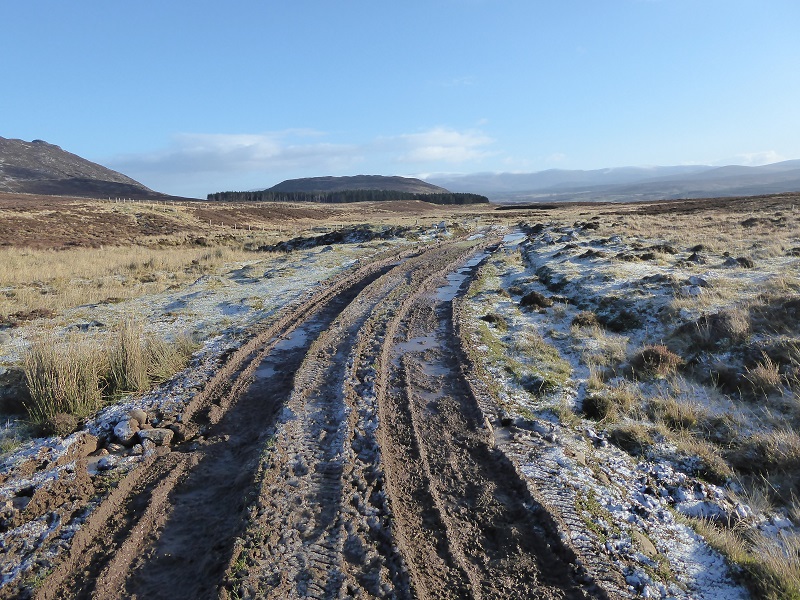
Following my post on the new and “upgraded” hill track in Glen Banchor (see here), the Cairngorms National Park Authority has informed Dave Morris and myself that they will fully investigate what has happened and feed back to us what action they can take. This is most welcome. I also reported to them that works had taken place on the Strone/Allt na Beinne hill track on the same estate. This post considers the issues this raises for the planning system and then makes some proposals for how the planning system could be reformed. (There is an ideal opportunity to change the current failed system in the forthcoming Scottish Planning Bill)
The Strone hill track
There has been a hill track by the Allt na Beinne, which is directly north of Newtonmore, for many years. Its marked on my OS Map which dates from 1980. Existing tracks, just like footpaths, need to maintained and therefore when a landowner decides to undertake maintenance work that should be welcomed. However, two issues arise from this. The first is the quality of the maintenance, with poor work having the potential to increase environmental damage and landscape impacts as well as negatively impacting on the recreational experience (see top photo). The second is when does maintenance turn into an alteration, now that all alterations to hill tracks fall under the planning system?
Although there is Scottish Government Guidance on the distinction between maintenance and alteration under the Prior Notification System (see here), when Forest Enterprise Scotland tries to pass off major alterations to tracks as maintenance (see here), you can see there are major challenges to the system. What has happened to the Strone track provides a further illustration of the issues but also got me thinking about potential solutions within the National Park.
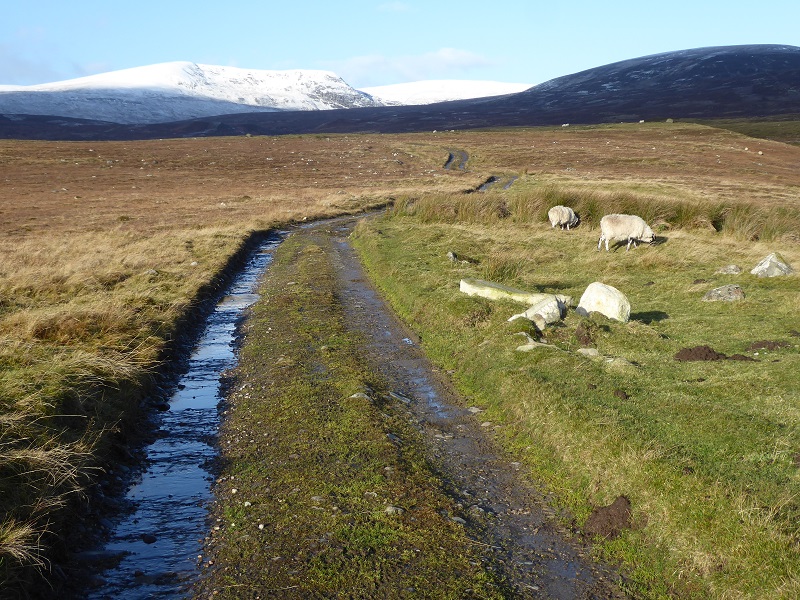
The track starts at Strone and is clearly partly agricultural in purpose, therefore falling into the category of a permitted development right which did not require any form of planning approval before the creation of the Prior Notification System. The first section is of good quality, has blended into the surrounding ground and being on flattish ground has very little landscape impact. Its good for walking and well used. It shows its possible to create good quality tracks outwith the planning system.
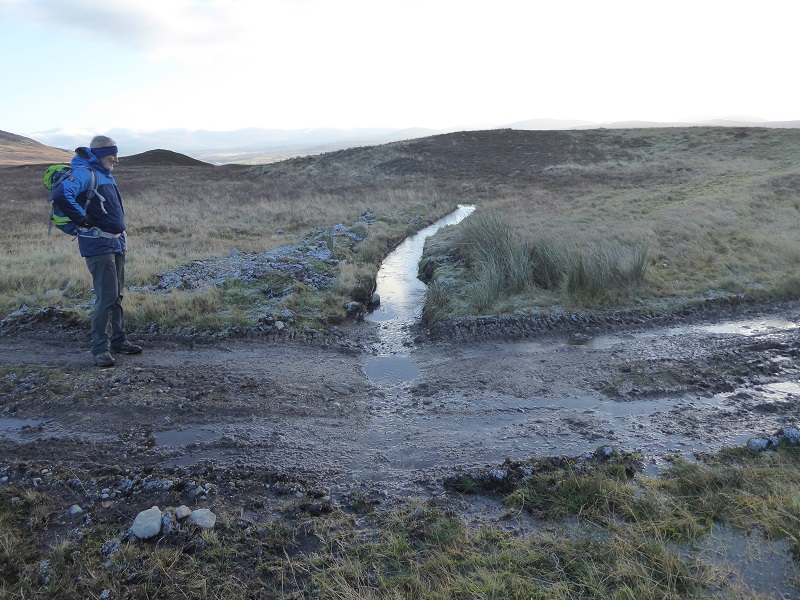
There was, however, evidence of some recent work on this first section of track. The estate appears to have taken the opportunity of having diggers available for work higher up the track to try and improve the drainage on dips in the track. There are several of these at present which either are filled with water (above) or are crossed by burns (below). I think most people would class work such as this as maintenance rather than an alteration to a track and therefore not requiring any form of planning consent or prior approval (which Planning Authorities give under the Prior Notification system). The problem is the work is of poor quality and not in my view fitting for a National Park. Its storing up problems, not solving them.
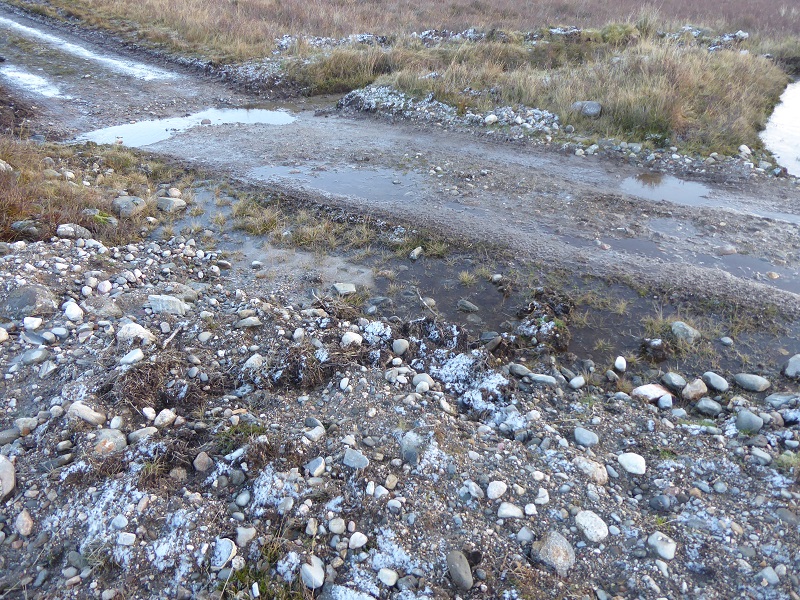
Its quite predictable that the burn flowing across the road will erode it in due course. A solution to this was pioneered in Scotland almost three hundred years ago with the Wade and Caulfield Military Roads. Where culverts would not work – as here because the road is too low relative to the surrounding land – they used paved cross drains. There are plenty of stones here which have recently been unearthed and dumped by the side of the track that the estate could have used to line the cross drain but they have not done so. What this shows is we need to find a way to ensure that maintenance work, whether of paths or tracks, is to an appropriate standard.
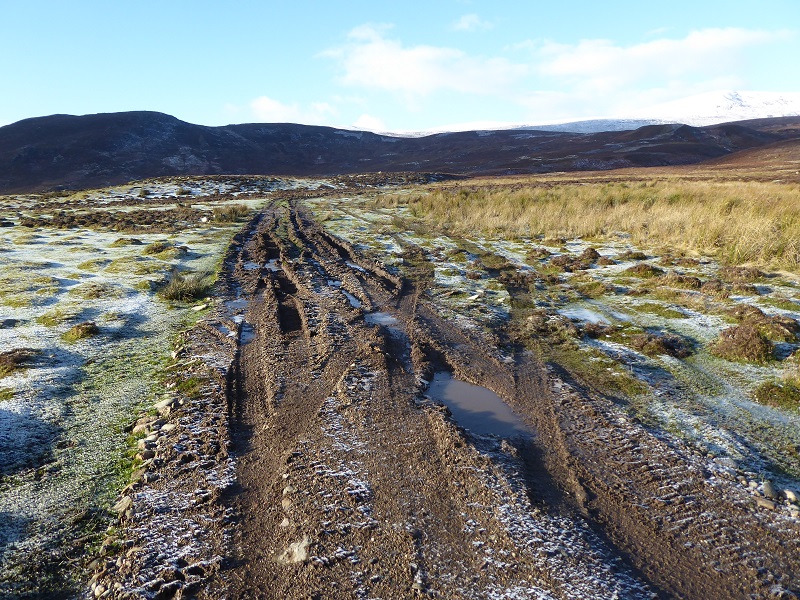
Undertaking maintenance work in wet conditions – much of the initial damage in the photo above appears to have been done by heavy caterpillar tracked vehicles – also causes damage. High quality maintenance is not just about appropriate design or the skill of the contractor, its about the timing of the work.

Towards the far end of the moor, before the track begins to rise, a borrow pit has been created (or extended). While borrow pits for forestry tracks are classed as permitted development rights – so if the road is created lawfully, so is the track – for agricultural roads they are not. Because of the size of the borrow pit my understanding is the estate should have applied for planning permission.

Further up the track there is evidence of other small borrow pits, with material dug out from the side of the track, without any attempt to restore the ground. I suspect Planning Authorities would see small borrow pits as part of maintenance work rather than an alteration to the track and therefore not requiring planning permission under the current system. Even if right, however, this leaves the question of whether poor quality work such as this should be allowed, particularly in a National Park.
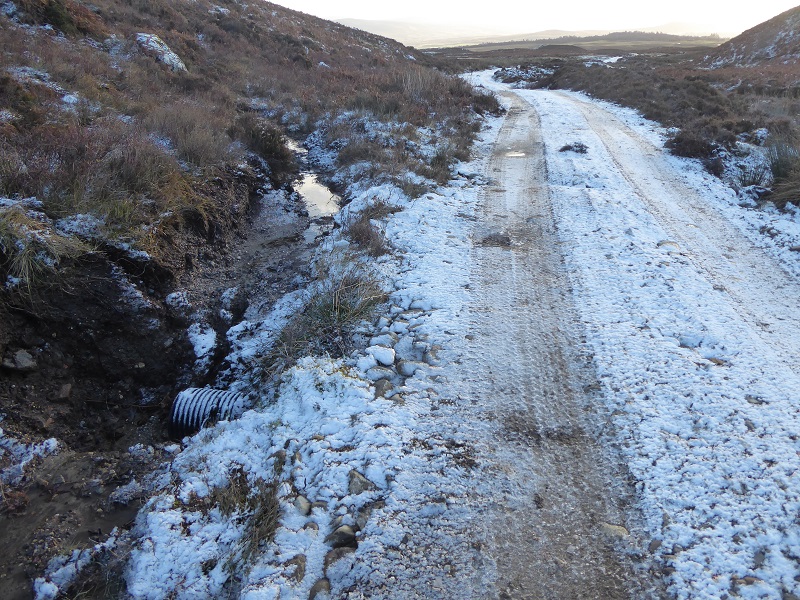
The extent of the track work increases as it enters the lovely small glen taken by the Allt na Beinne. When does maintenance, which does not require any type of planning consent, become alteration which does?
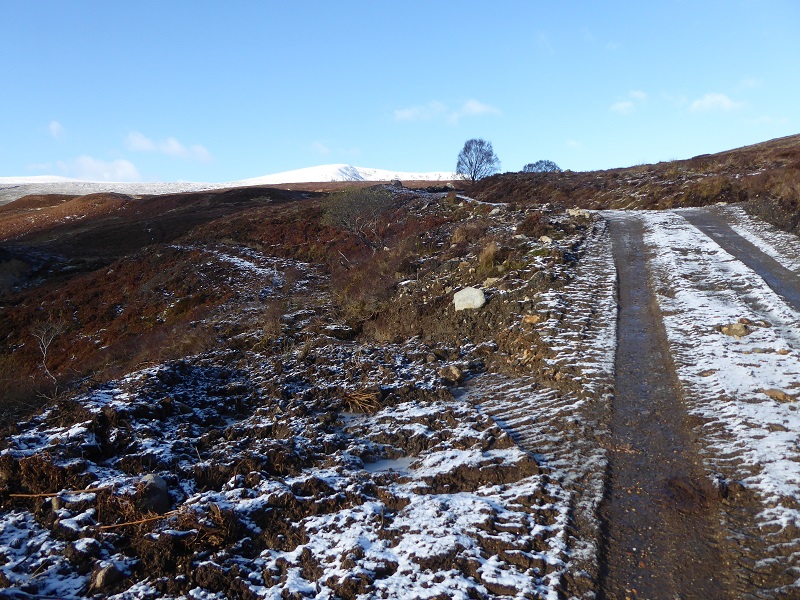
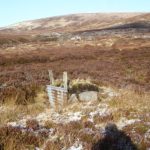 The work in the photo above may not be finished but to my mind the excavations here are far more than maintenance, they are alterations. Whether an alteration comes under the Prior Notification System or needs full planning permission depends on whether or not the track is for agricultural or forestry purposes. The moorland above the steep section of track is covered with signs of intensive grouse moor management so I believe these tracks are clearly non-agricultural in purpose and therefore the alterations should have been subject to full planning permission from the start.
The work in the photo above may not be finished but to my mind the excavations here are far more than maintenance, they are alterations. Whether an alteration comes under the Prior Notification System or needs full planning permission depends on whether or not the track is for agricultural or forestry purposes. The moorland above the steep section of track is covered with signs of intensive grouse moor management so I believe these tracks are clearly non-agricultural in purpose and therefore the alterations should have been subject to full planning permission from the start.
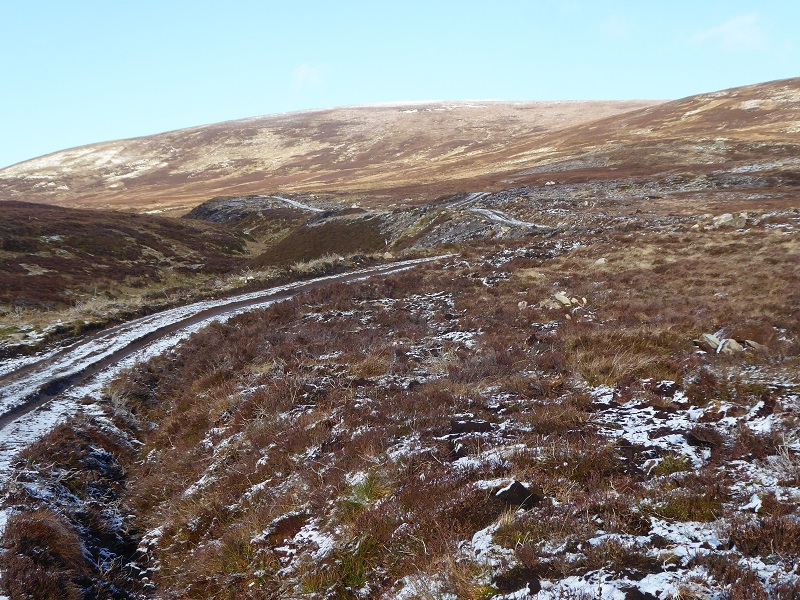
We did not have time to get to the end of the track but noted in many sections the total width of track plus disturbed ground appeared to be up to 20 metres and included piles of rocks and boulders. Again the scale of this is such that it should be treated as an alteration to the track rather than maintenance and there are issues both about the longer term landscape impact but also the quality of the track (which is currently a peaty morass in places – as you can see in left of photo).
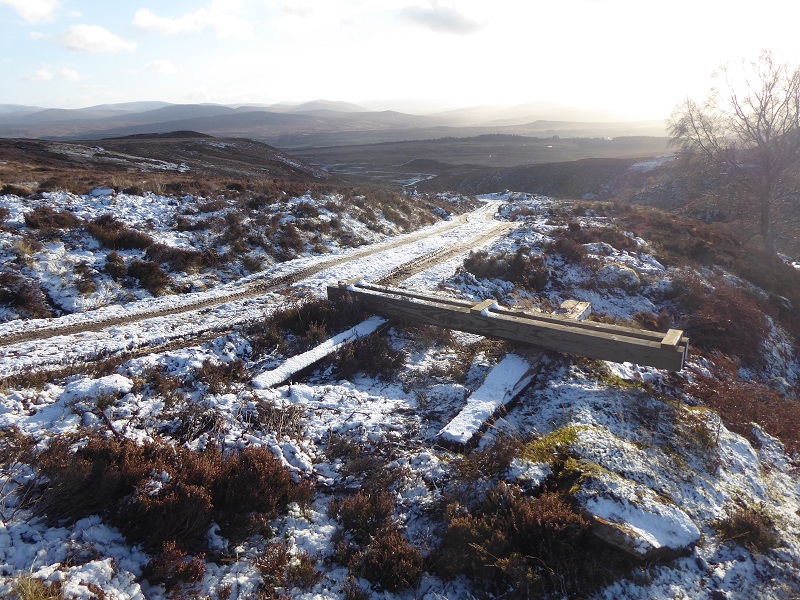
Its also clear the work is not finished though the end product is not relevant to the question of whether planning permission should have been applied for, only about whether the CNPA needs to take enforcement action.
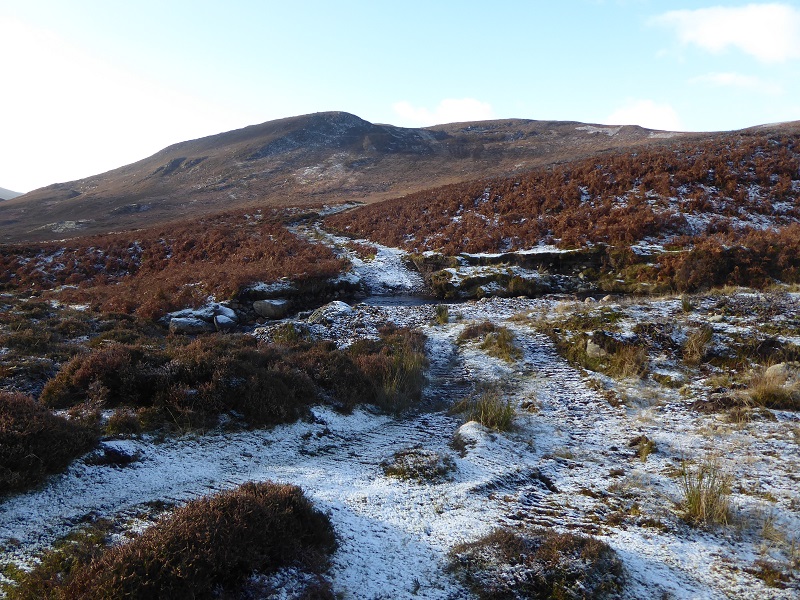
The final issue was that lower down you could see how ATVs or tracked vehicles are being driven from the Strone track, apparently around to meet the new Glen Banchor track. Where tracks are created by such use the question of maintenance and alteration is complicated by the fact that such tracks are not subject to any planning approval. In this case they represent a major extension of the track network in the Glenbanchor/Strone area.
So what are the lessons for our National Parks and the planning system?
I believe the photos illustrate there is a fine line between track maintenance, which does not need any approval from the Planning Authority, and alterations to tracks which do. The quality of both, however, matter, especially in our National Parks. The situation is then further complicated because alterations to Forestry and Agricultural tracks – such as the lower section of the Allt na Beinne track – come under the Prior Notification system while those for other purposes such as deer and grouse moor management – upper section of the Allt na Beinne track – come under the full planning system.
While I believe the failure of the new owners of the Glen Banchor and Strone estate, who have owned the adjacent Pitmain Estate for several years, to consult with the Cairngorms National Park Authority before starting any work on the Allt na Beinne track (or Glen Banchor track covered in my previous post) is inexcusable – and they need to be held account – I think we need to recognise the current rules creates a nightmarish situation for both land managers and planning authorities.
On one track the work being proposed could. for different sections, be classed as:
- maintenance not requiring any approval;
- alteration to a forestry or agricultural track requiring prior notification and possibly approval;
- alteration for other estate management purposes requiring planning permission;
- an extension for agricultural or forestry purposes needing prior notification;
- an extension for other purposes needing planning permission.
I started thinking about this after my post on the Glen Feshie tracks, questioning why the CNPA had allowed them to go ahead under the Prior Notification system without approval (see here). Dave Morris and I went to see Thomas MacDonnell, the Conservation Manager for Wild Land Ltd who manages Glen Feshie, a couple of weeks ago. He was extremely open about what the estate was trying to do and the fifteen or so miles of new tracks that had been given the go-ahead under the Prior Notification system. He was clear – and the planning documents reflect this – that the track were not just about forestry (which comes under the Prior Notification System) but also deer management and recreation (which don’t) and that it was not the estate’s decision to deal with this as a Prior Notification. What came out of this for me though is that dealing with some parts of the proposed tracks under the Prior Notification system and some under the full planning system would have been a nightmare for both the estate and the planning authorities. It made me understand therefore why staff in public authorities might have wanted to deal with this as one single type of application. The trouble – which I will come back to – is it did not fit into any single classification.
The work though that Thomas MacDonnell has been leading at Glen Feshie, points I believe, to some of the answers. Thomas took us out to look at some of the work the estate is doing to upgrade and repair existing tracks as well as the locations for the proposed new tracks.
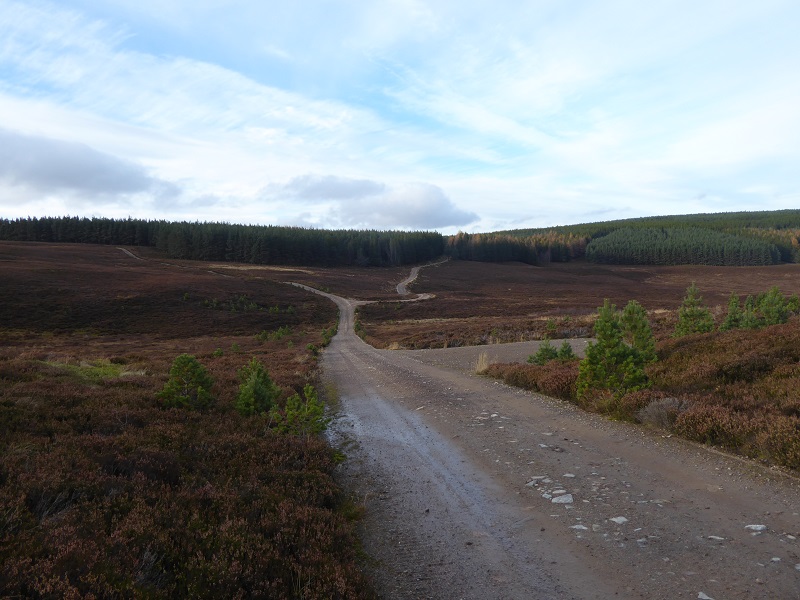
The work to existing tracks has been treated as maintenance, and not gone through the planning system., although in may cases badly eroded existing tracks have been transformed in appearance. How the work has been done though has been governed by a standard specification for tracks (on dry ground) which has been developed by Wild Land Ltd. It has used the same specification as part of the Prior Notification for the new tracks.
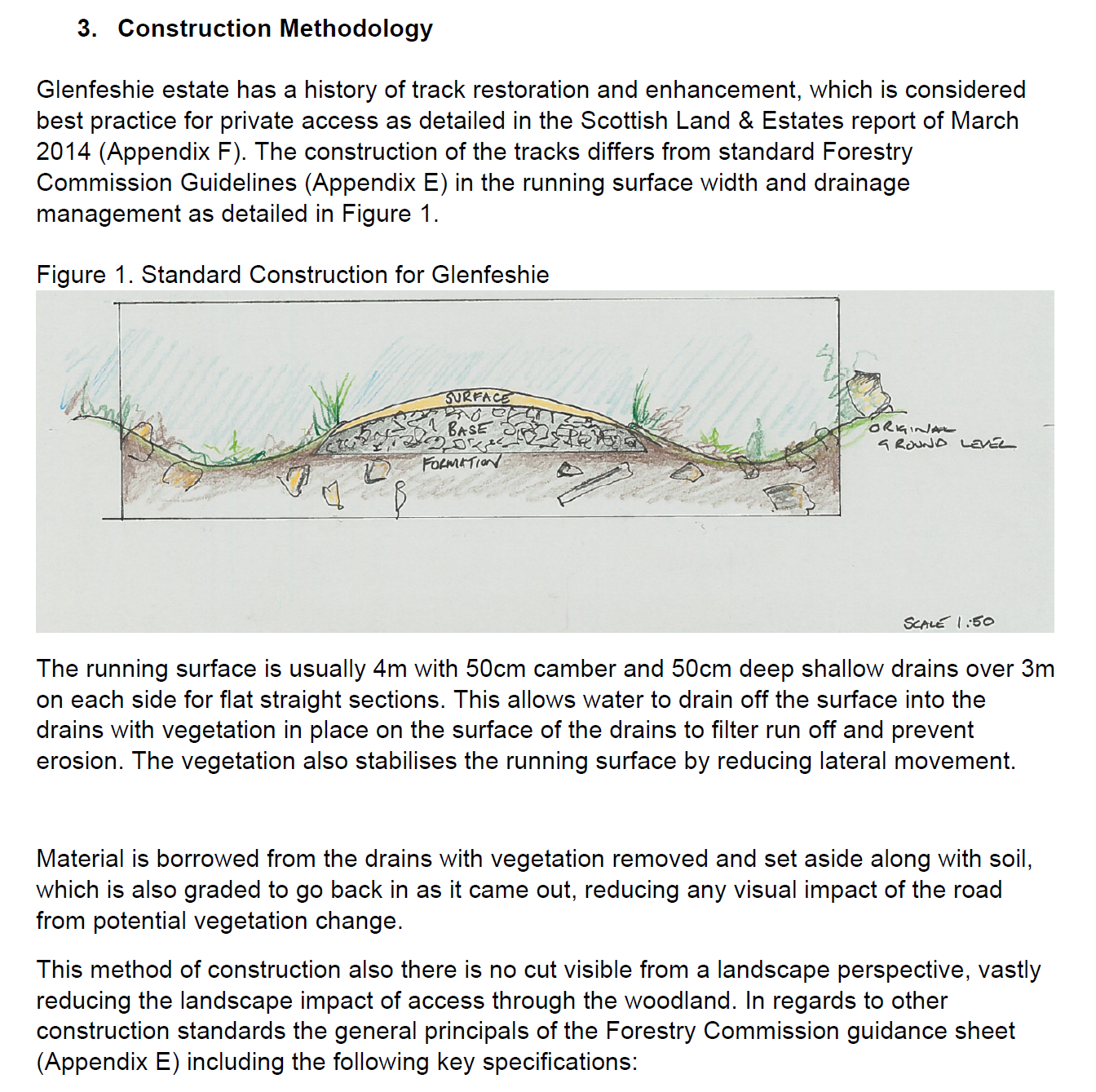
If all estates undertook track work according to agreed standards, the current distinctions between maintenance and alteration, and forestry/agricultural versus other tracks would become far less important.
The way forward
Working from the basis that all work on hill tracks should meet certain standards (and these could be higher in National Parks), the Prior Notification system could be adapted to be used where a landowner had agreed a set of standards with the Planning Authority. Whenever the landowner was planning maintenance or track upgrade works it would notify the Planning Authority of the location of such works (so they could monitor that the adhered standards were being adhered to) but no planning consent would be required. Alterations to the line of an existing tracks could also be dealt with under this system if the agreed standards included how unused/redundant sections of track would be restored. This would simplify the system for responsible landowners.
If the agreed set of standards/specification also included provisions about off-track use of ATVs, whose purpose was to prevent tracks being created by default, that would help address the impacts such tracks have on the landscape and to bring them under control.
A full planning application, which gave the public and other stakeholders the opportunity to comment on (and object to) proposals, would still be required for new tracks (including those for agricultural and forestry purposes) and for any works on tracks which were not covered by the set of standards which had been agreed between the Planning Authority and landowner. This would incentivise landowners to adopt and work to certain standards.
Planning Authorities would then be able to endorse certain existing model standards for hill tracks in their planning policies which could be adopted by landowners where they so wished. For example while Wild Land Ltd has developed its own set of standards for most of the tracks on the estate – which are in my view much better than those of the Forestry Commission which were designed for industrial forestry and not for National Parks or other protected areas – for areas of deep peat it has chosen to adopt the SNH/Forestry Commission Standards for “Floating Roads on Peat 2010.
While changing the system in the way I have proposed here would require changes to hill track regulation nationally – hence the need for discussion in the forthcoming planning bill – the CNPA could also set and promote the adoption of approved standards for hill track work in its new development plan. The Main Issues Report for this has just been issued for public consultation and provides an ideal opportunity for the CNPA to strengthen its policy in this area.
